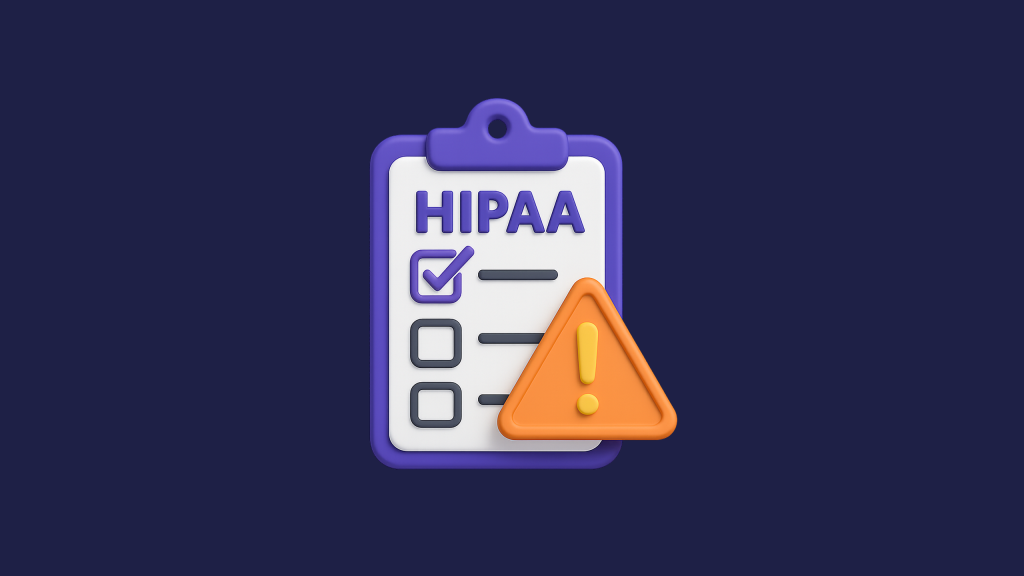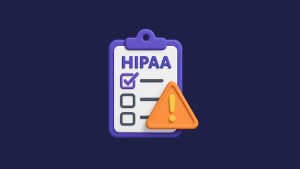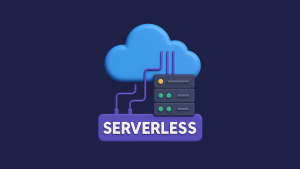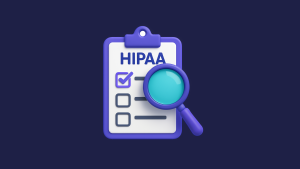HIPAA compliance requirements aren’t optional if you handle Protected Health Information (PHI). Startups are built to move fast, but when your product touches sensitive health data, speed without security can cost you. Whether you’re a health tech founder, building a SaaS platform for providers, or just collecting health data through an app, you’re operating under HIPAA.
And here’s the truth: most startups miss the mark on HIPAA compliance in their early stages. Not because they don’t care, but because they don’t know where to start, or they just assume cloud providers like AWS “handle it.”
What you'll learn
In this article, we’ll walk you through the HIPAA compliance requirements startups often overlook and show you how to avoid painful surprises later on.
If you’re looking for a shortcut to clarity, we’ve also created a free HIPAA compliance technical guide that breaks it all down for AWS users.
Why startups can’t ignore HIPAA
If your startup collects, stores, or processes Protected Health Information (PHI), even indirectly, you’re subject to HIPAA regulations.
This includes SaaS platforms for providers, wellness apps, patient communication tools, and even analytics platforms that touch health-related data.
Many early-stage teams assume HIPAA is something to “worry about later.” But compliance violations don’t wait until you’re ready. Failing to meet HIPAA requirements can result in six-figure fines, lost partnership opportunities, and erosion of trust with users and investors.
You don’t need a legal department to get started, but you do need to understand the core compliance requirements and where most startups go wrong.
Key Information
Protected Health Information (PHI) includes any health data that can identify an individual – from medical records to payment information to even appointment dates.
Common HIPAA compliance requirements startups overlook
Startups are often laser-focused on shipping features and closing early deals, compliance tends to take a back seat. But HIPAA isn’t something you can “retrofit” later without pain.
Below are the most common compliance gaps we see in early-stage companies:
-
No Business Associate Agreement (BAA)
Using cloud services like AWS or third-party analytics tools to handle PHI? You’re legally required to have a BAA in place with each vendor. Without it, storing PHI in the cloud is a HIPAA violation—even if your infrastructure is secure. -
Weak Access Controls
Many teams share logins, skip MFA, or give engineers full access “just for now.” But HIPAA requires role-based access control, MFA, and audit logs to restrict and track who accesses PHI. -
No Audit Logging
HIPAA mandates detailed records of who accessed what, when, and how. If you’re not logging access to PHI, you’re not compliant. Services like AWS CloudTrail or third-party log management tools are essential from day one. -
Missing Breach Response Plan
Startups often have no process in place for what to do if PHI is exposed: no escalation plan, no notification workflow. HIPAA requires you to report breaches, both to users and regulators, within tight timelines. -
No Security or Privacy Training
HIPAA requires you to train staff, even if “staff” is just you and two engineers. Everyone handling PHI should know the basic dos and don’ts. Without documentation or training logs, you’re out of compliance.
How startups can get it right without slowing down
HIPAA compliance doesn’t have to be a roadblock. It just needs to be built in early and intentionally.
And you don’t need a full compliance team or enterprise-grade infrastructure. You just need the right foundation.
Here’s how startups can approach HIPAA without killing momentum:
✓ Use HIPAA-eligible cloud services like AWS with a signed BAA. Avoid platforms that don’t support compliance or don’t offer clear documentation.
✓ Start with minimum viable compliance: implement access controls, encrypt PHI, enable logging, and document basic policies.
✓ Automate what you can. AWS tools like CloudTrail, GuardDuty, and IAM can do a lot of heavy lifting when properly configured.
✓ Lean on partners. You don’t need to figure it all out alone. Working with a cloud compliance expert or AWS partner like safeINIT can save you months of trial and error.
Most importantly, don’t wait. A basic HIPAA-aligned setup now is better than scrambling when a potential client asks, “Are you compliant?”
Get the clarity you need with our free HIPAA Compliance guide
If you’re unsure where to start or just want to be sure you haven’t missed something critical, we’ve put together a free guide designed specifically for companies building on AWS.
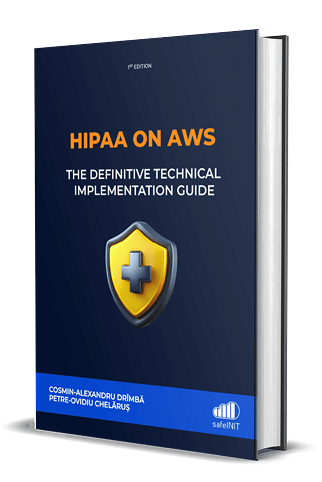
This resource breaks down:
- The 5 pillars of HIPAA compliance every cloud-native product should follow
- 15 essential AWS configurations you can’t afford to overlook
- and a glossary of 20 key HIPAA and AWS terms, explained in plain language
It’s the guide we wish we had when helping our first clients secure PHI in the cloud, and now it’s yours for free.
Download it now and start taking the guesswork out of compliance.
Conclusion
Meeting HIPAA compliance requirements can feel overwhelming, but it doesn’t have to be. If you understand the most commonly overlooked areas and take action early, you can avoid costly mistakes while building trust with users, partners, and investors.
Whether it’s signing a BAA, enforcing access controls, or enabling audit logging, these foundational steps go a long way toward building a secure, compliant infrastructure.
And with the right tools and guidance, you can meet HIPAA compliance requirements without slowing down your product development.
FAQ about HIPAA compliance requirements
When does my startup need to be HIPAA compliant?
The moment you start storing, processing, or transmitting PHI, HIPAA compliance applies—whether or not you’re billing clients yet.
Is a signed BAA with AWS enough to be compliant?
No. A BAA covers AWS’s responsibilities, but you’re still responsible for configuring services securely, monitoring access, and training your team.
Can I build MVPs and test features without full compliance?
Only if you’re not handling PHI yet. If there’s any chance PHI touches your infrastructure, even during testing, you must follow HIPAA safeguards.
Do we need a lawyer to handle HIPAA compliance?
Not necessarily. Many startups handle HIPAA internally, especially with cloud-native tooling and trusted partners, but legal review of your policies and contracts is highly recommended.
How long does it take to become HIPAA compliant in AWS?
With the right tools and guidance, startups can implement baseline HIPAA compliance in a few weeks. Full maturity takes longer, but it doesn’t have to delay your product roadmap.
When does my startup need to be HIPAA compliant?
The moment you start storing, processing, or transmitting PHI, HIPAA compliance applies, whether or not you’re billing clients yet.
Is a signed BAA with AWS enough to be compliant?
No. A BAA covers AWS’s responsibilities, but you’re still responsible for configuring services securely, monitoring access, and training your team.
Can I build MVPs and test features without full compliance?
Only if you’re not handling PHI yet. If there’s any chance PHI touches your infrastructure, even during testing, you must follow HIPAA safeguards.
Do we need a lawyer to handle HIPAA compliance?
Not necessarily. Many startups handle HIPAA internally, especially with cloud-native tooling and trusted partners, but legal review of your policies and contracts is highly recommended.
How long does it take to become HIPAA compliant in AWS?
With the right tools and guidance, startups can implement baseline HIPAA compliance in a few weeks. Full maturity takes longer, but it doesn’t have to delay your product roadmap.

